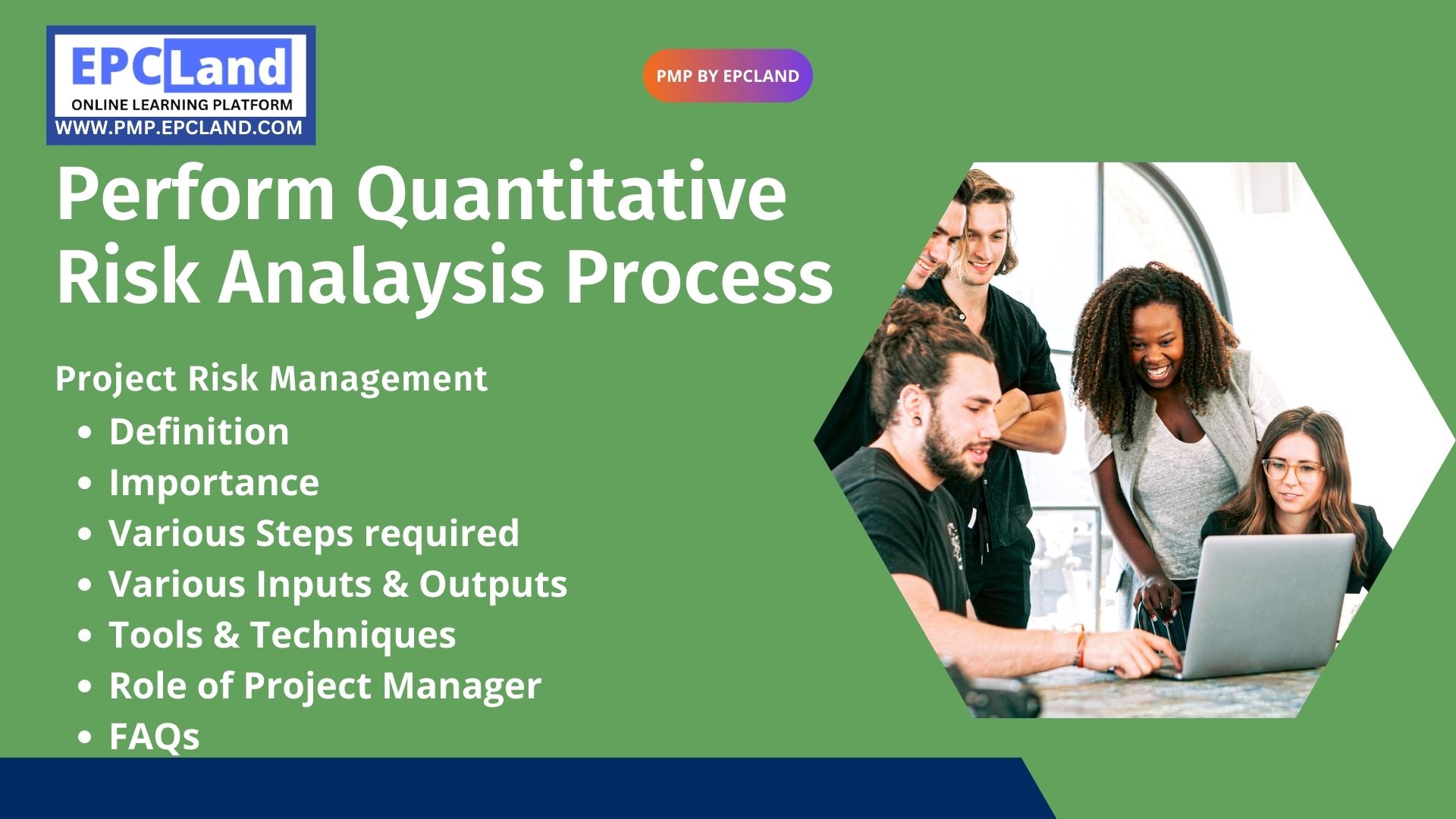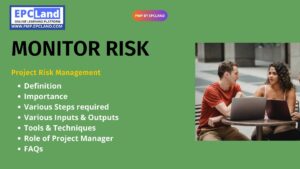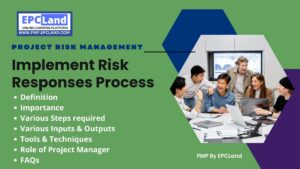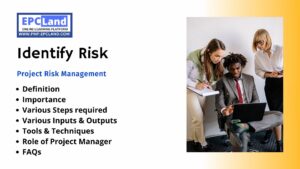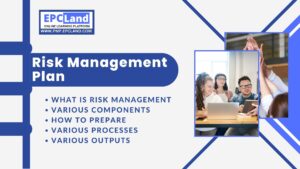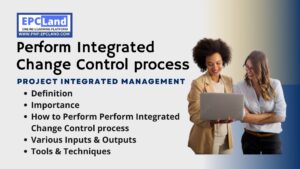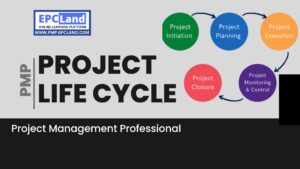Quantitative Risk Analysis is a crucial process for businesses and organizations looking to minimize potential risks and ensure the success of their operations. This process involves identifying and evaluating potential risks, and then developing strategies to manage or mitigate them. A comprehensive Quantitative Risk Analysis process helps organizations prioritize and allocate resources effectively, minimize potential losses, and stay ahead of risks.
In this guide, we’ll provide a step-by-step approach to performing a successful Quantitative Risk Analysis. We’ll cover the essential elements of the process, including identifying risks, evaluating their likelihood and impact, and developing risk mitigation strategies. Our goal is to empower you with the knowledge and tools you need to effectively perform a Quantitative Risk Analysis and minimize potential risks to your organization.
What is the Importance of “Perform Quantitative Risk Analysis Process”
The importance of performing a Quantitative Risk Analysis process can be summarized in the following ways:
- Prioritization: Helps prioritize and allocate resources effectively to manage risks.
- Decision-making: Supports informed decision-making by providing a comprehensive view of potential risks and their impact.
- Resource allocation: Identifies and evaluates risks to ensure that resources are allocated to manage the most critical risks first.
- Risk mitigation: Develops risk mitigation strategies to minimize potential losses and negative impact.
- Continuous improvement: Provides a basis for continuous improvement by regularly reviewing and updating risk management strategies.
- Compliance: Ensures compliance with regulations and industry standards by regularly assessing and managing risks.
- Stakeholder confidence: Builds stakeholder confidence by demonstrating a commitment to managing risks and ensuring the success of operations.
Attempt Quiz-1 on Perform Quantitative Risk Analysis Process
What are Various Steps required in “Perform Quantitative Risk Analysis Process”
The steps required to perform a Quantitative Risk Analysis process include:
- Identify Risks: Identify potential risks that may impact the success of an organization’s operations.
- Evaluate Risks: Assess the likelihood and potential impact of each identified risk.
- Assign Values: Assign values to risks based on their likelihood and impact to prioritize them.
- Develop Mitigation Strategies: Develop strategies to manage or mitigate each identified risk.
- Monitor and Review: Continuously monitor and review risks and mitigation strategies to ensure they remain effective.
- Update Process: Regularly update the Quantitative Risk Analysis process to ensure it remains relevant and effective in managing risks.
- Communicate Results: Communicate the results of the risk analysis process to stakeholders, including senior management, to ensure they are aware of potential risks and the strategies in place to manage them.
- Implement Mitigation Strategies: Implement the risk mitigation strategies developed during the analysis process.
What are various Tools & Techniques used for “Perform Quantitative Risk Analysis Process”
There are various tools and techniques used for performing a Quantitative Risk Analysis process, including:
- Risk Matrix: A visual representation of risks and their likelihood and impact, used to prioritize and allocate resources.
- Monte Carlo Simulation: A statistical modeling technique used to evaluate the impact of risks and evaluate potential outcomes.
- Decision Tree Analysis: A graphical representation of decision alternatives and their potential consequences, used to evaluate risk and make informed decisions.
- Fault Tree Analysis: A graphical representation of the relationships between events and their potential consequences, used to identify and evaluate the root causes of risks.
- Sensitivity Analysis: A tool used to evaluate the impact of changes in key variables on potential outcomes, used to understand the impact of risks and inform decision-making.
- SWOT Analysis: A tool used to identify an organization’s Strengths, Weaknesses, Opportunities, and Threats, used to evaluate potential risks and opportunities.
- PERT (Program Evaluation and Review Technique): A method used to schedule and coordinate complex projects, used to identify and manage risks associated with project timelines.
- Failure Modes and Effects Analysis (FMEA): A technique used to identify and evaluate potential failure modes and their consequences, used to prioritize and manage risks.
What are various Inputs required for “Perform Quantitative Risk Analysis Process”
The inputs required to perform a Quantitative Risk Analysis process include:
- Organizational goals and objectives: To understand the context of the risk analysis and the outcomes it aims to achieve.
- Identification of potential risks: A comprehensive understanding of potential risks that may impact the success of operations.
- Business processes and systems: An understanding of the systems and processes that support the organization’s operations, to identify potential risk areas.
- Data and historical information: Relevant data and historical information on past risk events and their impact, to inform risk evaluation and prioritization.
- Expert opinions: Input from subject matter experts, stakeholders, and key personnel, to provide insights and perspectives on potential risks and risk management strategies.
- Regulations and standards: Knowledge of relevant regulations and industry standards that impact the organization, to ensure the risk analysis process complies with these requirements.
- Resource constraints: Awareness of resource constraints, including time and budget limitations, to ensure the risk analysis process is feasible and practical.
- Stakeholder engagement: Input from stakeholders, including senior management, to ensure the risk analysis process is aligned with their needs and expectations.
What are various Outputs required for “Perform Quantitative Risk Analysis Process”
The outputs of a Quantitative Risk Analysis process include:
- Prioritized list of risks: A comprehensive list of risks, ranked in order of priority based on their likelihood and impact.
- Risk mitigation strategies: A set of strategies for managing or mitigating each identified risk, including plans for implementing and monitoring these strategies.
- Risk management plan: A comprehensive plan for managing risks, including a description of the risk analysis process, risk mitigation strategies, and the roles and responsibilities of stakeholders.
- Communication plan: A plan for communicating the results of the risk analysis process to stakeholders, including senior management, to ensure they are aware of potential risks and the strategies in place to manage them.
- Risk register: A central repository for information on risks, including details on their likelihood and impact, risk mitigation strategies, and progress in managing these risks.
- Updated business processes and systems: Recommendations for updating business processes and systems to reduce the impact of potential risks.
- Continuous improvement plan: A plan for continuously monitoring and reviewing risks and mitigation strategies, and updating the risk analysis process as needed.
What is the role of Project Manager in “Perform Quantitative Risk Analysis Process”
The Project Manager plays a critical role in the Quantitative Risk Analysis process by leading and coordinating the risk management effort. Their responsibilities include:
- Facilitating the identification of potential risks: Working with stakeholders and subject matter experts to identify and document potential risks to the project.
- Evaluating risks: Assessing the likelihood and impact of each identified risk to prioritize their management efforts.
- Developing risk mitigation strategies: Working with stakeholders to develop effective risk mitigation strategies, including contingency plans and risk response plans.
- Allocating resources: Ensuring adequate resources are available to manage risks and implement mitigation strategies.
- Monitoring risk management: Regularly monitoring the risk management process to ensure that risks are effectively managed and mitigation strategies are being implemented as planned.
- Communicating with stakeholders: Keeping stakeholders informed of the risk management process and the status of risks and mitigation strategies.
- Updating the risk register: Maintaining the risk register and updating it regularly to reflect changes in the risk management process and the status of risks.
Attempt Quiz-1 on Perform Quantitative Risk Analysis Process
Final Take away on “Perform Quantitative Risk Analysis Process”
The Quantitative Risk Analysis process is a critical tool for organizations to effectively manage potential risks and ensure the success of their operations. By gathering and analyzing relevant data, prioritizing risks, developing and implementing effective mitigation strategies, and continuously monitoring risk management efforts, organizations can minimize the impact of potential risks and achieve their goals and objectives. The Project Manager plays a crucial role in leading and coordinating the risk management process, working closely with stakeholders to ensure a comprehensive and effective approach to risk management.
FAQs on “Perform Quantitative Risk Analysis Process”
- What is Quantitative Risk Analysis? Quantitative Risk Analysis is a systematic process for evaluating the likelihood and impact of potential risks, and developing strategies to manage those risks.
- Why is Quantitative Risk Analysis important? Quantitative Risk Analysis helps organizations identify, prioritize, and manage potential risks, reducing the impact of those risks on their operations and helping to ensure the success of their projects and initiatives.
- What steps are involved in Quantitative Risk Analysis? The steps involved in Quantitative Risk Analysis include identifying potential risks, evaluating their likelihood and impact, developing risk mitigation strategies, implementing and monitoring those strategies, and continuously reviewing and updating the risk management process.
- What tools and techniques are used in Quantitative Risk Analysis? Quantitative Risk Analysis may involve the use of statistical analysis, decision-tree analysis, Monte Carlo simulation, and other quantitative methods to assess the likelihood and impact of potential risks.
- Who is responsible for performing Quantitative Risk Analysis? The Project Manager is typically responsible for leading and coordinating the Quantitative Risk Analysis process, working closely with stakeholders to identify and manage potential risks.
- What are the outputs of a Quantitative Risk Analysis process? The outputs of a Quantitative Risk Analysis process include a prioritized list of risks, risk mitigation strategies, a risk management plan, a communication plan, a risk register, updated business processes and systems, and a continuous improvement plan.
